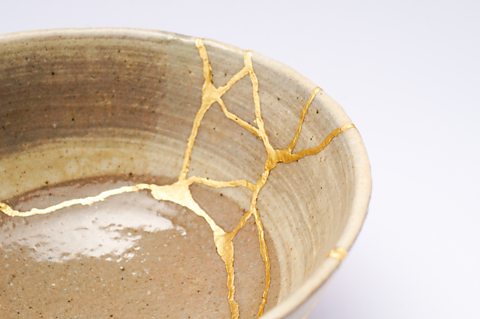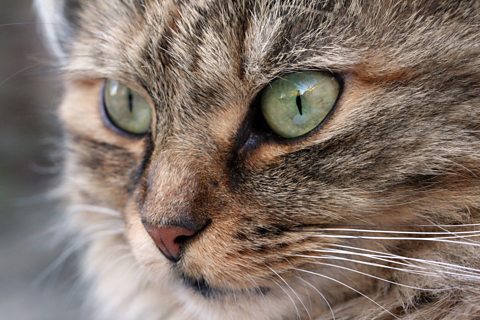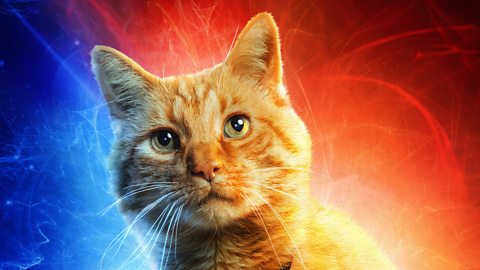Philosophy has bit of a reputation for being a very complex and confusing subject. In reality, people make reference to famous philosophical concepts all the time.
If youโve ever wondered what the right thing to do is in a tricky situation, or tried to figure out whether youโre dreaming or awake, youโve actually been thinking about philosophy.
Weโve taken a look at five frequently referenced ideas in philosophy, and explained how they relate to you and your everyday life. Youโve probably come across a few already, without even realising it.
Get to grip with these and you'll be able to impress your friends with your deep and meaningful contributions.
 Image source, ด๓ฯ๓ดซรฝ
Image source, ด๓ฯ๓ดซรฝThe Trolley Problem โ When you're stuck between a rock and a hard place
Is it worse to see something bad happening and do nothing, or try and make it 'better' by doing something bad?
The Trolley Problem is a famous thought experiment, devised by the philosopher Philippa Foot in 1967, which makes you consider this question.
Five workers are standing on a track. Heading towards them is an out of control trolley, which they can't hear. You can save them by flicking a switch to transfer the trolley onto a different set of tracks, where there is only one worker. What do you do?
According to Dr Ann Whittle (University of Manchester), many people say they would flick the switch. According to this approach, known as consequentialism, โit is better that one person dies rather than five".
But the problem has a second scenario, in which, to divert the trolley, you have to push the single worker into the path of the trolley to stop it. Dr Whittle finds students will often change their minds and refuse to push the worker. Explaining why isn't easy. She says: "You might think that this is because it is psychologically more difficult to kill someone in such a direct way, but this reason alone lacks moral weight.โ Ultimately, the outcome is the same: one person dies and five live.
Another argument is that you shouldnโt flick the switch or push the worker, as there is a moral difference between action and inaction โ actively doing something to cause someone's death, like flicking the switch, is worse than not intervening and five people dying.Dr Whittle says in this argument "because what we do matters more than what we omit, killing someone by switching the switch is unacceptable, but letting the others die is not."
 Image source, ด๓ฯ๓ดซรฝ
Image source, ด๓ฯ๓ดซรฝUtilitarianism โ Choosing happiness for the greatest number of people possible
Whether itโs an individual decision or one that will affect wider society, utilitarianism is all about choosing โthe greatest good for the greatest numberโ.
Dr Whittle explains that, according to utilitarianism, โthose acts which have the best consequences are those which maximise pleasure and minimise pain." Everyone has an equal right to happiness, so utilitarians say we should consider how a decision will affect everyone involved, not just ourselves.
Philosophers Jeremy Bentham and John Stuart Mill were both utilitarians, but they defined well-being differently. According to Dr Whittle, Bentham took the simple view that well-being is โthe absence of painful experiences and the presence of pleasurable sensationsโ.
Mill refined this by distinguishing between lower pleasures (like eating), and higher pleasures that are more intellectual in nature. In his view, no amount of lower pleasures are worth a higher pleasure - others may think thatโs up for debate!
 Image source, VectorMine
Image source, VectorMineCogito, ergo sum (I think, therefore I am) โ How thinking proves that we exist
Youโll have heard this one a million times before, but what does it actually mean?
Right now, how confident are you that what you are experiencing is real? Are you really awake or having a very realistic dream? Sometimes, you have no idea you're dreaming until you wake up. Weโre not trying to provoke an existential crisis, but rather get you into the mindset of French philosopher Renรฉ Descartes.
In his search for certainty in the world, he concluded that we shouldnโt accept that anything is true, if thereโs a chance that it isnโt. He ruled out evidence from the senses as they arenโt completely reliable.
Descartes took his thought process to the extreme by introducing the idea of an all-powerful demon. This demon has the power to make you believe anything, to the point that you canโt even trust that 2+3=5. You donโt even know youโre being manipulated. Would you have to doubt everything, including your own existence?
We can ask the question of whether we exist, but Descartes thought that in the end our own existence is the one thing we canโt coherently doubt. This is because our ability to doubt, like the possibility of being deceived by a demon, is itself a proof that we exist. So long as we have the ability to think and doubt, we can be sure of our own existence.
This is what Descartes means by his famous phrase. I know that I think (even if that thinking might be completely wrong), so I know at least that I exist.
 Image source, Marco Montalti
Image source, Marco MontaltiWabi-sabi โ Imperfection is beautiful
In an age of influencers and filters, it can easily feel like everyone else is perfect, and that somehow you don't measure up in some way. But wabi-sabi offers a different, more compassionate and forgiving perspective on life. It's evident in kintsugi pottery.
Kintsugi pottery, the art of mending broken things with lacquer and gold, is renowned for the beauty it finds in imperfection, an idea thatโs proved popular on social media.
This ancient Japanese art has its roots in an eastern philosophical approach known as wabi-sabi. The central idea is that by accepting our flaws and the uncertainty of life, we can find a greater sense of fulfillment and peace.
The powdered gold cracks in kintsugi pottery serve as a reminder that the breakage itself was a significant and intrinsic part of that objectโs history. Those cracks will always exist but once mended, the harden lacquer will ensure its continued use. It is both fragile and strong. Itโs not hard to see how this can be used as a metaphor for our own lives. We will all experience tough and challenging times, but kintsugi shows us the importance of putting ourselves back together again, healing and transforming.
Restoring an object can take up to three months, but the process is said to teach resilience and acceptance of our broken parts. The cracks will still be there, but they will be beautiful.
 Image source, Marco Montalti
Image source, Marco Montalti Image source, ด๓ฯ๓ดซรฝ
Image source, ด๓ฯ๓ดซรฝSchrรถdingerโs Cat โ How a cat can't be both dead and alive
Itโs arguably one of the most famous cats in the world, with frequent pop culture references, but exactly what is so special about Schrรถdingerโs cat? Well for starters, itโs not a real cat. But it was part of an absurd thought experiment which demonstrated how quantum physics cannot be applied to our everyday lives.
Consider the following questions: Can something be simultaneously dead and alive? If you canโt see it, how do you know if itโs dead or alive?
They might be morbid but these questions were posed by Erwin Schrรถdinger in 1935, as he highlighted the paradoxical nature of quantum mechanics. This is a field of physics that examines the behaviour of particles even smaller than an atom, like protons and electrons.
Weโre still getting to grips with this subatomic world, where particles appear to behave in weird and wonderful ways. The theory of quantum superposition argues that subatomic particles can be in two places at one time, until we observe them as being in one.
Confused? Youโre not alone. Whilst this theory might make sense in the world of quantum mechanics, it doesnโt fit with our classical understanding of how physics governs the visible world around us. Thatโs where Schrรถdingerโs cat comes in.
In this thought experiment (no cats were actually harmed), Schrรถdingerโs ask us to imagine that a cat is locked in a box with a radioactive substance and a Geiger counter (a device for measuring radioactivity). When radioactivity is detected from the decaying substance, a vial of poison is released. As time passes, there is a 50% chance that the cat has been killed.
Since this is happening inside a locked box, we canโt observe it. Following quantum mechanics, theoretically, the cat is both dead and alive until we observe either way by interrupting the experiment.
Obviously, a cat cannot be both alive and dead. Schrรถdinger knew this was absurd. He was simply demonstrating that some interpretations of quantum mechanics are flawed because they donโt provide a broader theory to help us understand what the weird data means and how it fits with other scientific theories about reality.
Some quantum physicists argue that it shows how quantum phenomena apply only at the subatomic level. That the world of medium-sized objects (like cats) tends to behave in ways weโre more familiar with, isn't disproved by Schrรถdingerโs cat.
 Image source, ด๓ฯ๓ดซรฝ
Image source, ด๓ฯ๓ดซรฝThree philosophy nuggets to help you during lockdown
Philosophy lecturers from around the UK give their favourite theories to help cope with hard times.

There may be more behind keeping - or ditching - those new year resolutions

Ten cats that made history
You spend all day scrolling through videos of them on the internet, now learn about the ones that made history.
